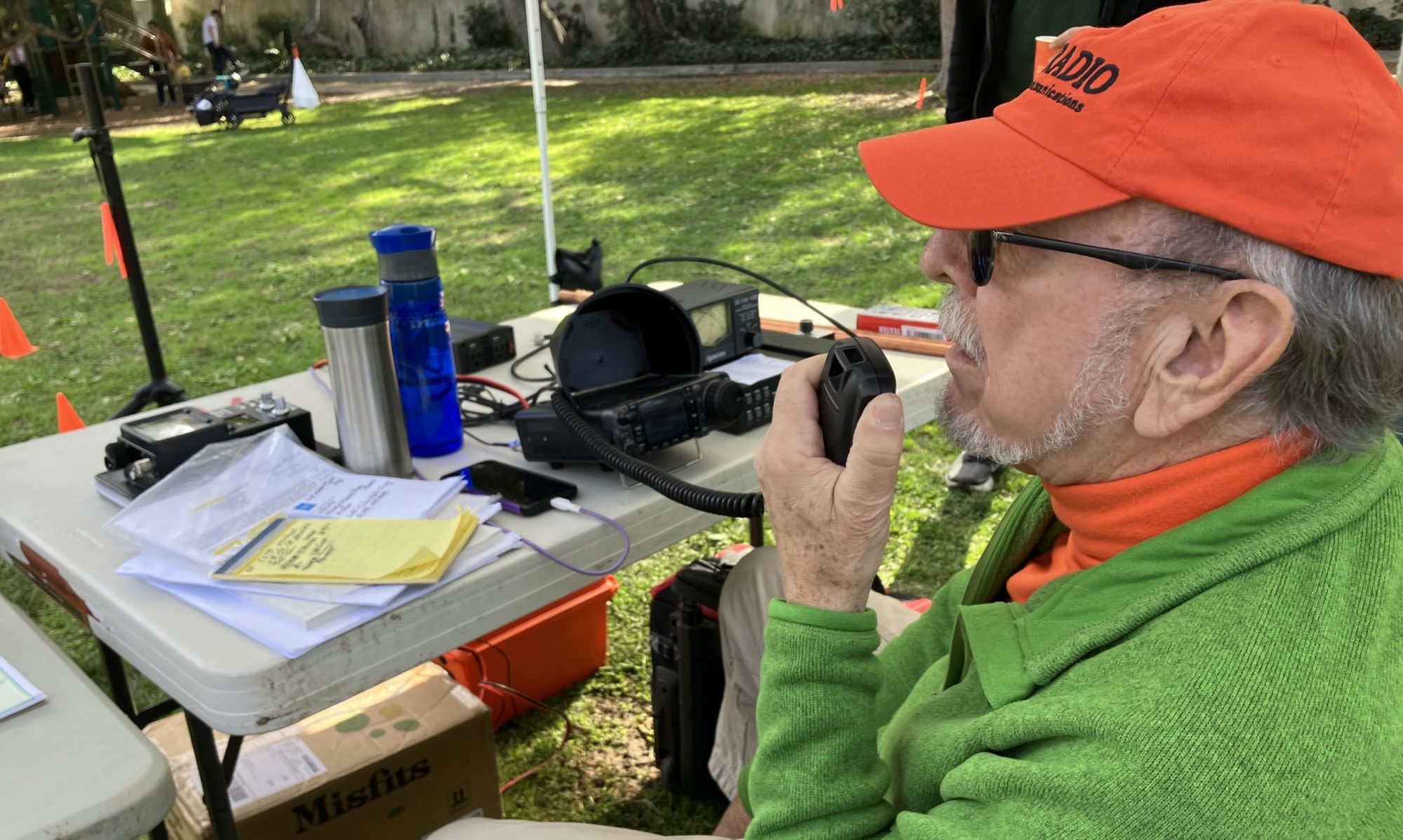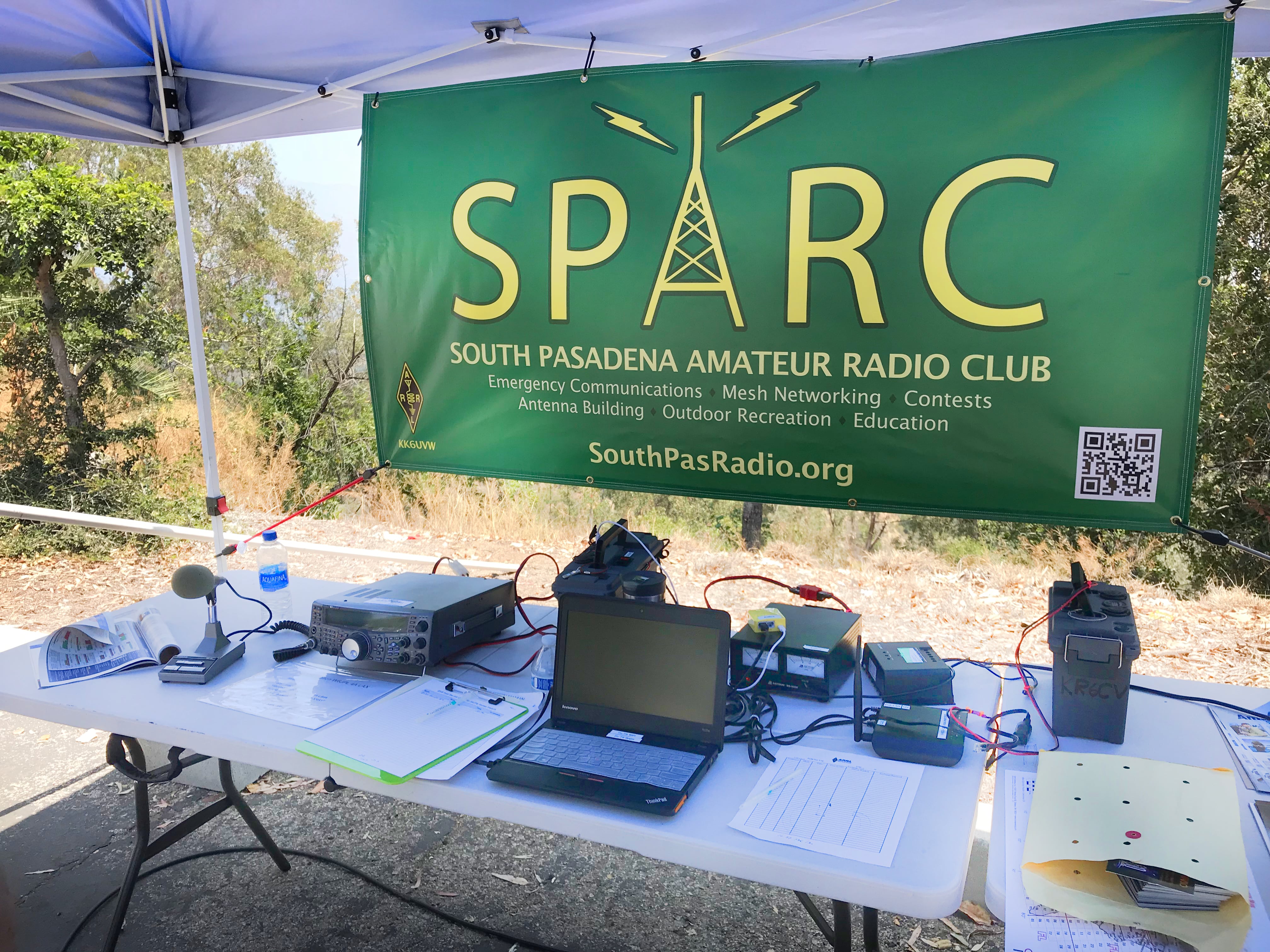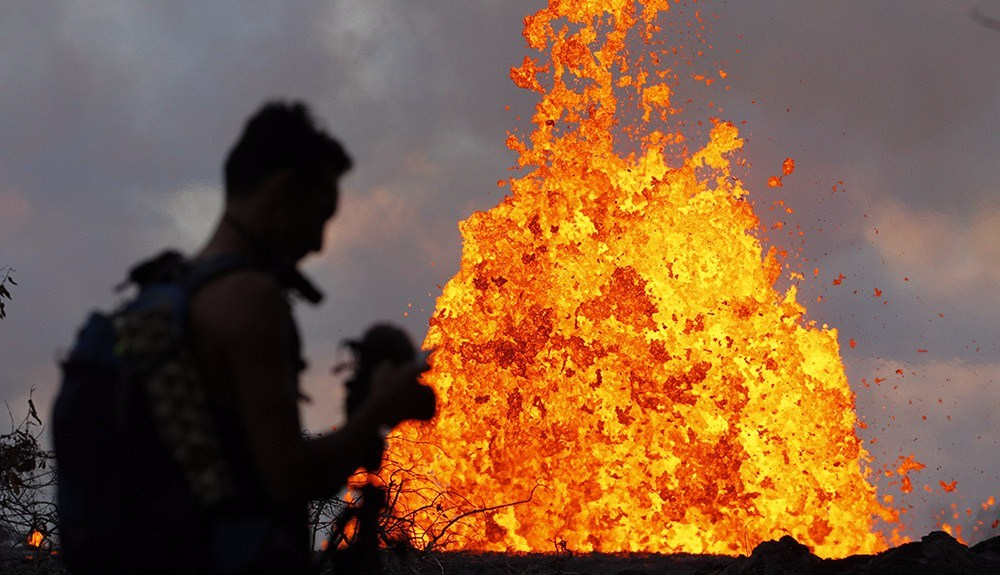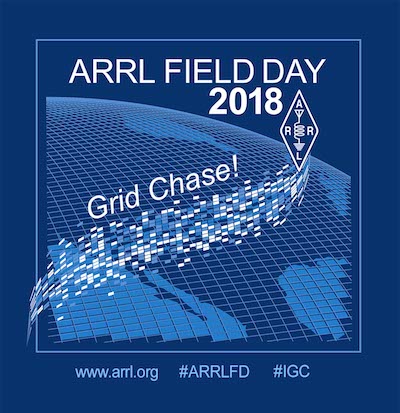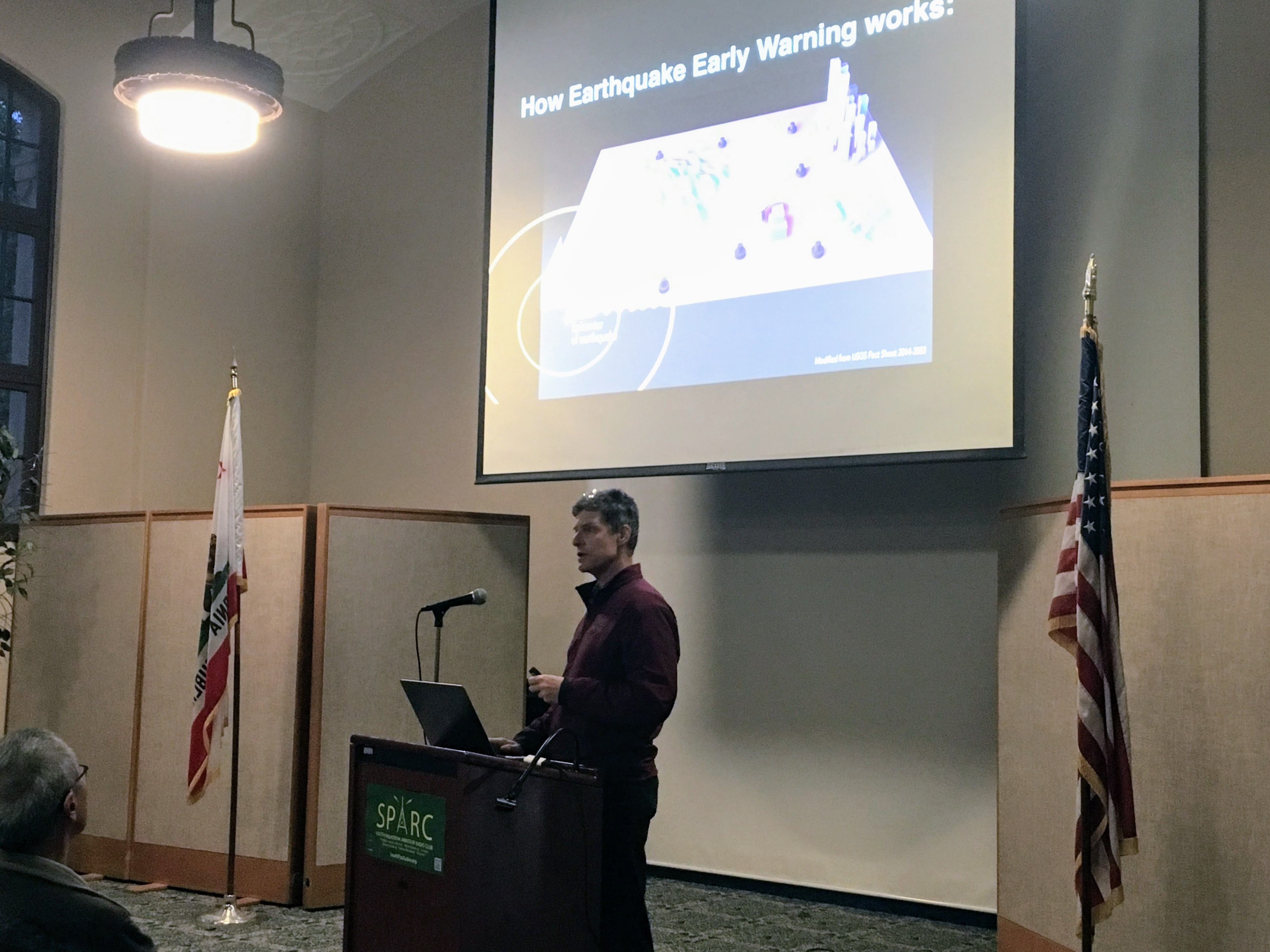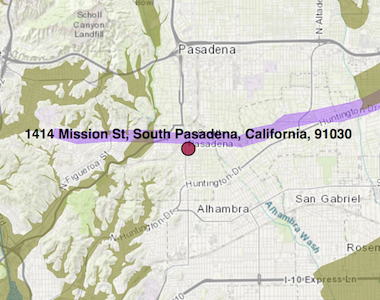Field Day 2018 was a fun-filled twenty-four hours of outreach, learning and socializing. Hams from SPARC, Pasadena Radio Club, JPL Amateur Radio Club and Caltech Amateur Radio Club joined forces to operate seven different stations atop the Arroyo Seco at the Art Center College of Design. PRC’s Jim Marr AA6QI was our Field Day captain coordinating volunteers from the four clubs. SPARC was proud to run a Get on the Air (GOTA) station where visitors could try out a radio and make contacts without needing a license. We answered lots of questions and encouraged curious guests to take the plunge into our hobby.
Here are the reported number of contacts (QSOs) from each station.
- 80-10m CW (Morse code): 1114 QSOs covering all 50 states
- 40m single sideband (SSB): 354 QSOs covering 41 states
- 75m/20m/15m SSB: 266 QSOs covering 44 states
- 160m-10m digital mode station (FT8, PSK-31 & RTTY): 51 QSOs covering 21 states
- VHF/UHF: 121 QSOs, all in California
- GOTA: 25 QSOs from 1pm to 5pm on Saturday
Huge thanks to Jim Marr for making everything run so smoothly. To all the participating volunteers and to all the eager visitors, thanks for making Field Day 2018 such an enjoyable and memorable experience. Hope to see you soon at a meeting and hear you on the air!















Our local paper, the South Pasadena Review, ran an article on the GOTA station in its July 6 edition.
Photos by John KK6ZVQ and Tom WA0POD.
Updated 07/08/18 with links to South Pasadena Review article.
